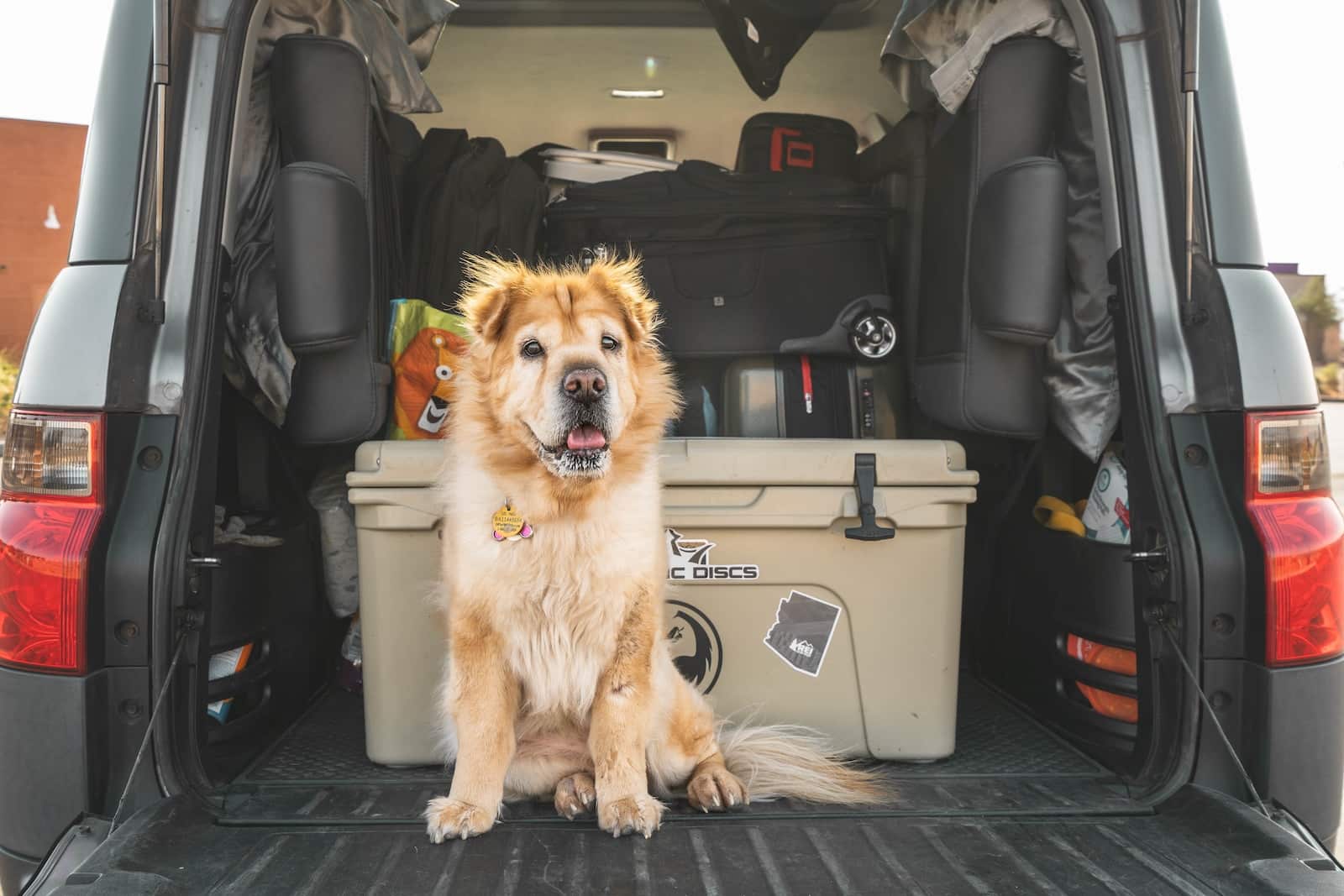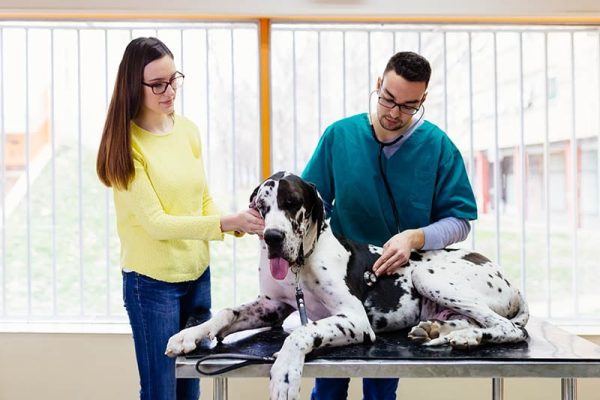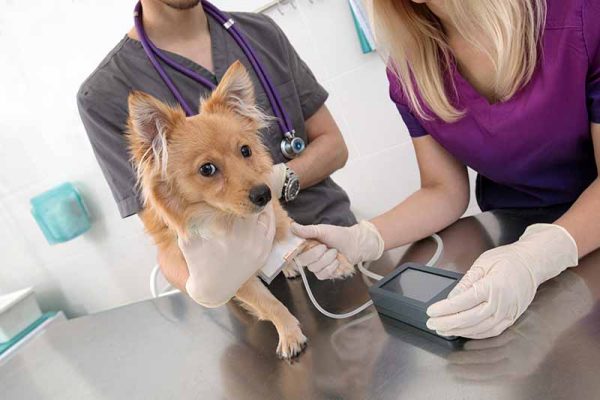When you think of road trips, you may have the image of a pup sticking its head out of a car window and enjoying the breeze. Many dogs love car rides, and they often make the best travel companions. They usually would love nothing more than to spend all day on the road with their favorite people.
Road trips can be fun and memorable experiences for both canines and humans, but they do require extra planning when pets are involved. To make the process easier for you, we compiled a list of the essential supplies that you’ll need to enjoy a safe and stress-free road trip with your dog.

The 15 Essential Road-Tripping Supplies
Food & Feeding Supplies
1. Portable Food Bowls
- Our Pick: Dexas Popware for Pets
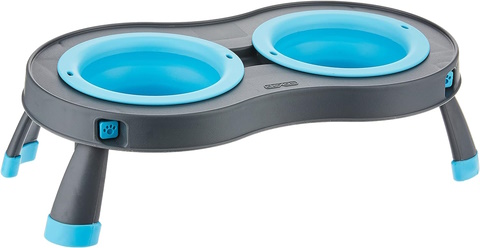
Having a set of durable travel food bowls makes all the difference when road-tripping with dogs. These types of food bowls are easy to clean and are often collapsible, so they do not take up too much space in your car.
We recommend the Dexas Popware for Pets food bowl set because it keeps your dog’s food and water bowls all in one place. The set is just 0.2 inches thick when collapsed and is dishwasher safe. So, it’s easy to clean, and you don’t have to worry about keeping track of multiple bowls while you’re traveling.
2. Dog Water Bottle

It’s important to keep your dog well-hydrated during your travels. A dog water bottle ensures that your pet has easy access to water, whether you’re on the road, camping, or taking a break at a rest stop.
The Highwave AutoDogMug Portable Dog Water Bottle can hold up to 20 ounces of water. It comes with a water bowl that attaches to the top of the bottle. When you squeeze the bottle, water will gather in the bowl, and your dog can drink from it easily. This bottle also comes with a convenient strap that enables you to clip it to bags or carabiners.
3. Portable Mini Fridge
- Our Pick: AstroAI Mini Fridge

A portable mini fridge is a must if your dog eats wet or fresh dog food. It will ensure that your dog’s food stays fresh while you are on the road and significantly reduce the risk of food poisoning. Mini fridges come in several different sizes, but most should be able to hold a few days’ worth of dog food.
The AstroAI Mini Fridge is an excellent choice for road trips. It has a compact design and comes with a car adapter so that it can continue to run while you are driving.

Treats & Toys
4. Dog Treats

Part of the fun of road trips is snacking while you drive. So, make sure to pack your dog’s favorite treats so they can join in on the fun. Dog treats can help turn road trips into positive experiences for your pet and can be used to keep them near you while you’re out exploring new areas.
Full Moon Natural Cuts Slicked Chicken Jerky is the perfect road trip treat for dogs. It is made with all-natural ingredients and contains limited ingredients. Your dog won’t even give your snacks a second glance when they’re munching on these tasty treats.
5. Plush Toy
- Our Pick: KONG Cozie Baily the Blue Dog Toy

Road trips are often easy for dogs because they can spend up to 50% of their day sleeping and 30% of their day loafing around. It’s usually not that difficult to have your pet keep still inside your car if they’ve gotten exercise beforehand.
Still, your dog may appreciate having a plush toy as a travel companion. They can snuggle with the toy or play with the squeaker if they are bored. The KONG Cozie Baily the Blue Dog Toy is a great travel companion, as it’s both extremely soft and durable. It’s the best playtime and napping buddy.
6. Calming Chews
- Our Pick: Zesty Paws Hemp Calming Bites
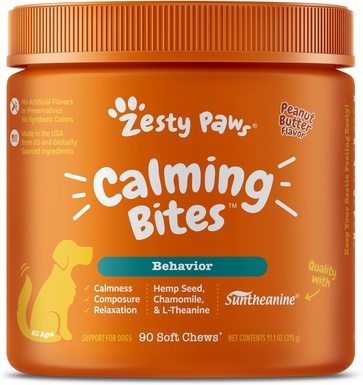
Some dogs may feel a little anxious on their first road trip because it’s a brand-new experience for them. Calming chews can help them stay relaxed as they get used to driving for longer distances.
Zesty Paws is a reputable brand known for making all kinds of supplements. These calming chews contain natural ingredients that have calming effects, such as ashwagandha and suntheanine. It also comes in a tasty peanut butter flavor that dogs enjoy eating.
7. Nausea Medicine
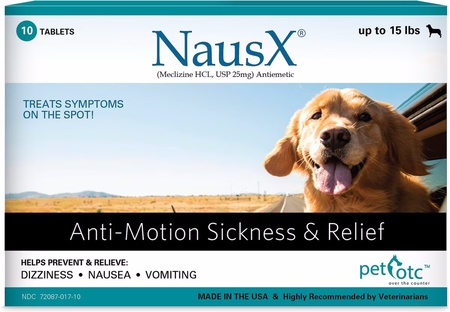
Some dogs may feel motion sickness if they’re in the car for too long, so it’s helpful to bring nausea medicine with you on road trips. Just make sure to consult your veterinarian before giving it to your dog, as it can interfere with other types of medication or have side effects.
NausX is one of the most common nausea medications for dogs. It has fast-acting ingredients and can help prevent nausea when taken 30 minutes before driving. It can also provide up to 6 hours of comfort and has an odor-free formula.

Travel Safety Supplies
8. Car Seat Belt
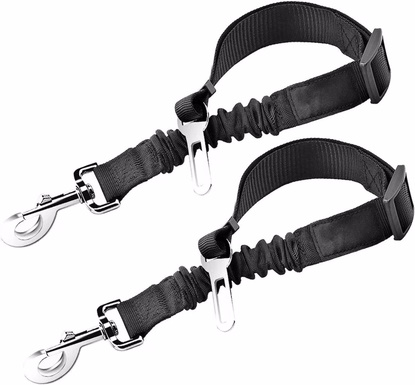
Car seat belts are essential for long road trips. You never know what type of terrain your car will drive over, and seat belts will ensure your dog stays safe in their seat. They’ll also reduce distractions for you while you’re driving so you can focus on the road and get to your destination safely.
We recommend the SunGrow Cat & Dog Car Leash Elastic Seat Belt & Restraint because it’s extremely durable and comfortable for dogs to wear. It has adjustable nylon straps that fit most small to medium-sized dogs. It also has an elastic bungee that absorbs shock and allows your pet to shift from sitting to lying down with ease.
9. Car Seat
- Our Pick: HDP Deluxe Lookout Dog Booster Car Seat
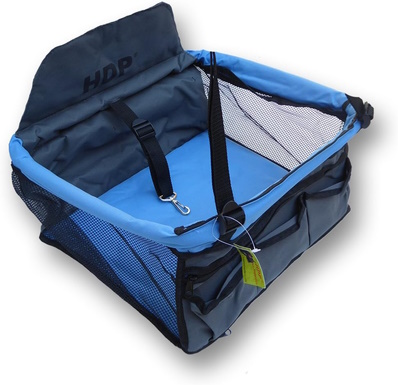
Car seats are beneficial for small to medium-sized dogs. They keep them in a safe enclosure and prevent them from falling off their seats. Dog car seats come in several different designs. Some are made with mesh, while others have more cushion and are made with softer material.
The HDP Deluxe Lookout Dog Booster Car Seat is a safe choice for most dogs because it has a see-through design that gives dogs a clear view of their surroundings. It has a sturdy metal frame and plush mesh padding that will keep your pet both safe and comfortable. It also has a safety strap that attaches to any type of harness or collar.
10. Dog Travel Bag
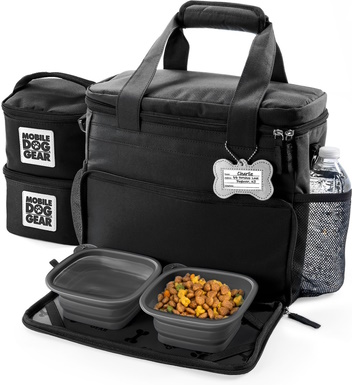
While dog travel bags can be expensive, they’re worth the investment if you plan to travel with your dog frequently. They keep all your dog’s travel supplies in one place so you don’t have to worry about losing any items while you’re on the road.
The Mobile Dog Gear Week Away Tote Pet Travel Bag is a great example of a high-quality dog travel bag. It has space for two food bowls and lined carriers that you can use to store food and treats. There’s also plenty of extra room for water, toys, and other pet supplies.
11. Poop Bags

It’s important to bring a few rolls of doggy poop bags on your road trip. Along with picking up after your dog, they can serve as last-minute storage bags or disposable bags for any trash that accumulates in your car.
Since poop bags get used up so frequently, we recommend choosing eco-friendly varieties that are made with recycled materials or are biodegradable. The Original Poop Bags Compostable Dog Poop Bags are an excellent eco-friendly choice. These large, durable bags are made with plant-based material and have handles that make tying easy.
12. First Aid Kit
- Our Pick: KURGO First Aid Kit for Dogs & Cats
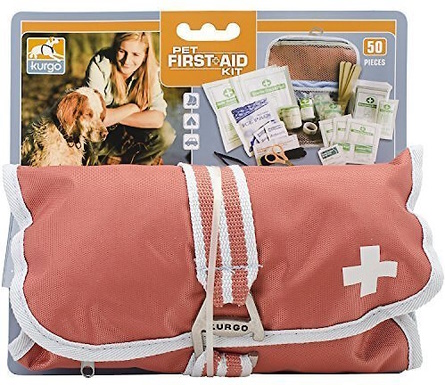
As the old saying goes, “Always be prepared,” and that goes double when it comes to safety. You wouldn’t take a road trip without your medications and a basic first aid kit, and that should apply to your dog too. You can create your own kit, or there are numerous ready-made kits available to buy. KURGO First Aid Kit for Dogs & Cats is a great basic first aid kit that won’t take up a lot of room in your bag or car. If you plan to take your dog on numerous adventurous trips and long hikes, it might be worth investing in a kit with a wider range of materials, but this one is a good starting point.
Just make sure you always have a supply of any medications your pet is on, your vet’s contact information, and the numbers to poison advice hotlines.
| Pet Poison Helpline:
855-764-7661 ASPCA Animal Poison Control Center: 888-426-4435 |
If you need to speak with a vet but can't get to one, head over to PangoVet. It's our online service where you can talk to a vet online and get the advice you need for your pet — all at an affordable price!
Grooming & Cleaning Supplies
13. Paw Wipes
- Our Pick: Hepper Wash Wipes

You never know what kind of mess your dog may get into during a road trip. So, it’s worth bringing a pack of paw wipes on your road trip. These will help your car stay clean and free of any dirt or mud that gets stuck on your dog’s feet.
We recommend the Hepper Wash Wipes because they can be used to spot-clean any part of your dog that gets dirty. They’re made with a soft and durable material that picks up dirt from your dog’s paws easily. The formula is also made with moisturizing ingredients to prevent dry skin and irritation.
14. Dry Shampoo
- Our Pick: Hepper Waterless No Rinse Pet Shampoo

It’s unlikely you’ll have quick access to a bathtub when you’re on the road, so it’s important to bring dry dog shampoo with you. While it won’t deep clean your dog, it can help keep odors at bay, especially if they’ve rolled in something smelly.
The Hepper Waterless No Rinse Pet Shampoo has a powerful yet gentle formula that deodorizes and freshens up your dog’s coat without irritating it. It’s free of harsh chemicals and has a pH-balanced formula that moisturizes and nourishes the skin and coat.
15. Hairbrush
- Our Pick: Boshel 2-in-1 Dog Brush & Hair Remover

Bringing a hairbrush will prevent mats and tangles in your dog’s coat and remove any dirt and debris. Brushing your dog during a road trip will also reduce the amount of hair that gets stuck in your car seats.
When traveling, you can save space by bringing a two-in-one brush. The Boshel 2-in-1 brush has a pin brush on one side and a rubber surface on the other side, which has nubs that can pick up loose dog hair from car seats and clothes.

Conclusion
Investing in high-quality dog travel supplies will make a huge difference on your road trip with your pup. They make traveling much easier, and the best kinds of travel supplies will help you save space while keeping your dog safe. Being as prepared as possible will help reduce stress and allow you to be in the moment to create fun memories with your pet. So, make sure you set aside time to plan with gathering your essential dog road trip supplies so you and your dog can enjoy many happy days on the road together.
See Also:
- What to Pack for a Dog on a Road Trip
- Chastity Belt for Dogs: Pros, Cons & When to Use (Vet-Approved)
Featured Image Credit: Jimmy Conover, Unsplash
